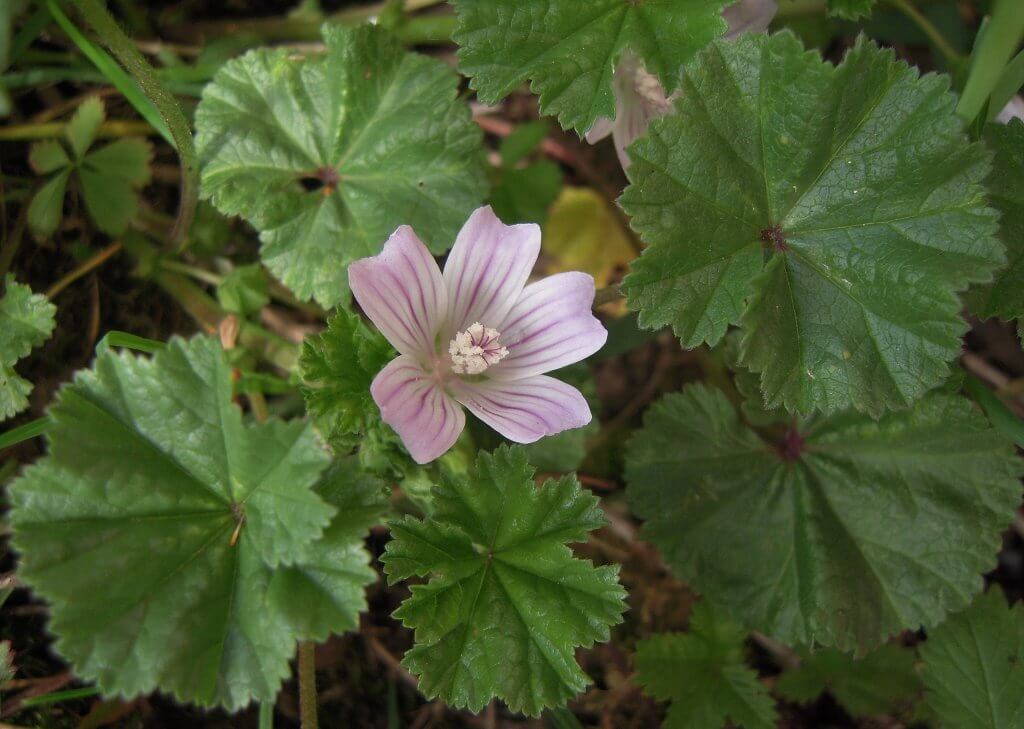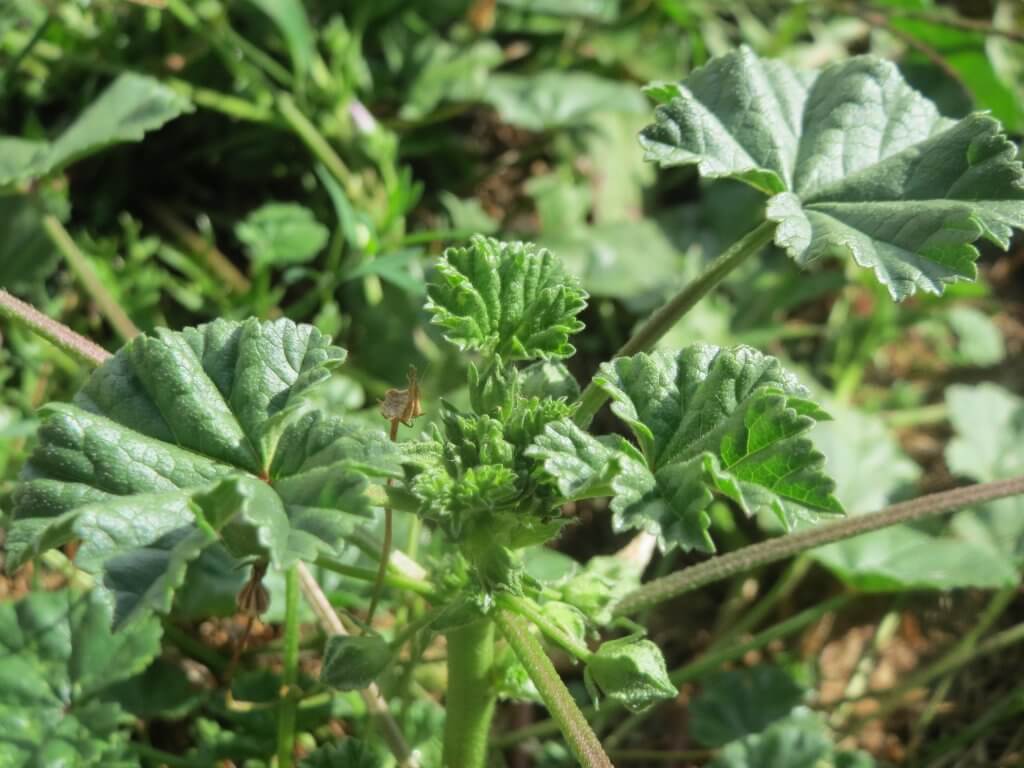Common mallow (Malva neglecta), is an annual plant, very commonly thought of as a weed. Originally native to Europe and wide areas of Africa and Asia, mallow plants have spread throughout the world through trade and accidental transportation. Common mallow is found prolifically throughout the United States, however as a non-native plant it out competes other wild plants for nutrition and space. It is known by a number of other colloquial names, including cheese plant, roundleaf mallow and button weed.
Also frequently referred to as dwarf mallow, the plant is relatively low growing compared to some other mallows, reaching no more than 2ft. It favors areas of disturbed soil, where it can quickly establish a deep and fleshy taproot.

The plant can usually be distinguished by its distinctive five white to pale pink petals, usually with a purple stripe running from the center. The dwarf mallow can often be confused with the low mallow (Malva pusilla). However when flowers are present, the dwarf mallow will have notably larger and deeply colored flowers.
The leaves branch out from a rosette of long stems, each leaf a rounded shape with 5-7 lobes and a serrated edge. The stems and leaves are coated in a fine layer of hairs. The flowers develop into fruits of a stout disc shape with a hole in the center. These disc fruits will contain usually up to 15 dark brown seeds.
Edible parts and other uses
Leaves, shoots and fruits can be harvested and eaten from the common mallow. They have a mild, nutty flavoring and a mucilage like texture. The shoots and leaves can even help to thicken soups due to their gelatinous interior. Young leaves and shoots can be added raw into salads, and slightly older leaves are best when cooked into hot dishes. During late summer the ripening fruit pods can be harvested and used much like a caper.

The roots can actually be used as an egg white substitute in the creation of some dishes due to their thickening properties. After boiling and simmering the roots, the water can be whisked up to create soft mounds that can be mixed with sugar and baked into meringues.
A herbal tea can be created using the dried leaves and flowers. It was once thought to treat and soothe a number of respiratory and intestinal issues, from coughs to nausea. The heart shaped leaves were also commonly used as a poultice to cover sores, inflammations and small wounds.
Cautions
Most other mallows within the Malva genus have edible leaves, however careful identification is still necessary.
Many people often mistake common mallow for Carolina geranium, a native weed to the US. Again this weed is perfectly edible, so there are no extreme cautions to be aware of when identifying common mallow.
Foraging
Look for common mallow in vacant lots or along the edges of fields, woodlands and pathways and even your own yard. Many gardeners battle with common mallow appearing in their lawn, without appreciating its potential.

Pick the young, tasty shoots and leaves in spring, making sure to wash them thoroughly. They are best used when freshly picked, however they could also be frozen.
Did you know…
Once commonly known as cheese weed or cheese plant in a number of areas, common mallow earned this name because of the shape of its fruits. When ripening, the sepals split open to reveal the wheel shaped fruit hidden within, somewhat resembling a wheel of cheese.
Conclusion
A nutritious potherb with surprisingly high amounts of anti-oxidants and vitamins, common mallow has a lot to offer. Before wildly, weeding the lawn in your back yard, look closely at what gems it may be harbouring.
—————Written by Hannah Sweet
Hannah is a freelance writer and graphic designer from the UK. With a penchant for travelling, photography and all things botanical, she enjoys writing about a wealth of topics and issues, from conservation and slow living, to design and travel. Learn more about her writing and design services at www.sweetmeanders.co
Many of our readers find that subscribing to Eat The Planet is the best way to make sure they don't miss any of our valuable information about wild edibles.
See our privacy policy for more information about ads on this site







One Response
Hi I would love to join up but it seems not to like my email address ?